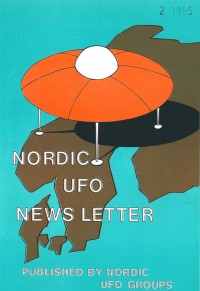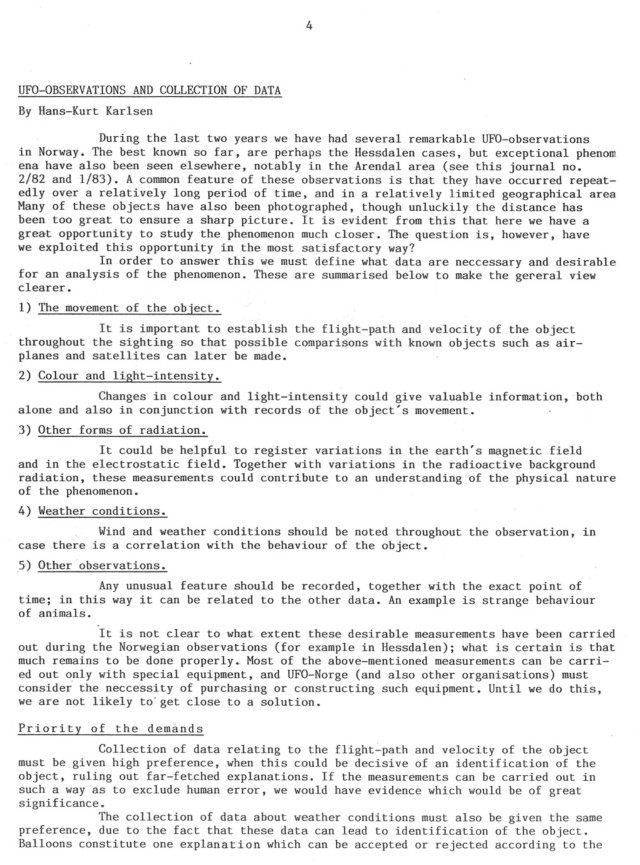Nordic UFO Newsletter1983, February issue, page 4. |

|

|
|
UFO-OBSERVATIONS AND COLLECTION OF DATA By Hans-Kurt Karlsen During the last two years we have had several remarkable UFO-observations in Norway. The best known so far, are perhaps the Hessdalen cases, but exceptional phenomena have also been seen elsewhere, notably in the Arendal area (see this journal no. 2/82 and 1/83). A common feature of these observations is that they have occurred repeatedly over a relatively long period of time, and in a relatively limited geographical area. Many of these objects have also been photographed, though unluckily the distance has been too great to ensure a sharp picture. It is evident from this that here we have a great opportunity to study the phenomenon much closer. The question is, however, have we exploited this opportunity in the most satisfactory way? In order to answer this we must define what data are necessary and desirable for an analysis of the phenomenon. These are summarized below to make the general view clearer. 1) The movement of the object. It is important to establish the flight-path and velocity of the object throughout the sighting so that possible comparisons with known objects such as airplanes and satellites can later be made. 2) Colour and light-intensity. Changes in colour and light-intensity could give valuable information, both alone and also in conjunction with records of the objectís movement. 3) Other forms of radiation. It could be helpful to register variations in the earth's magnetic field and in the electrostatic field. Together with variations in the radioactive background radiation, these measurements could contribute to an understanding of the physical nature of the phenomenon. 4) Weather conditions. Wind and weather conditions should be noted throughout the observation, in case there is a correlation with the behaviour of the object. 5) Other observations. Any unusual feature should be recorded; in this way it can be related to the other data. An example is strange behaviourof animals. It is not clear to what extent these desirable measurements have been carried out during the Norwegian observations (for example in Hessdalen); what is certain is that much remains to be done properly. Host of the above-mentioned measurements can be carried out only with special equipment, and UFO-Norge (and also other organizations) must consider the necessity of purchasing or constructing such equipment. Until we do this, we are not likely to get close to a solution. Priority of the demands Collection of data relating to the flight-path and velocity of the object must be given high preference, when this could be decisive of an identification of the object, ruling out far-fetched explanations. If the measurements can be carried out in such a way as to exclude human error, we would have evidence which would be of great significance. The collection of data about weather conditions must also be given the same preference, due to the fact that these data can lead to identification of the object. Balloons constitute one explanation which can be accepted or rejected according to the |